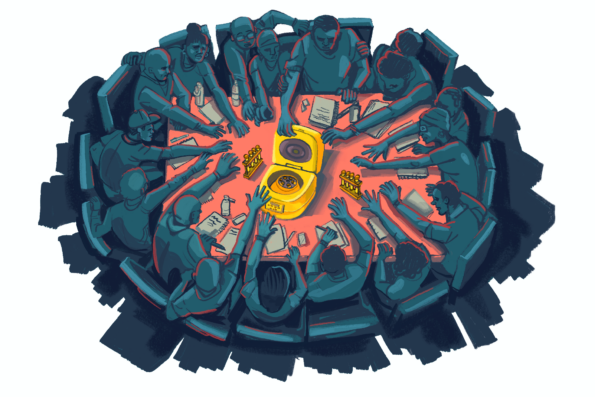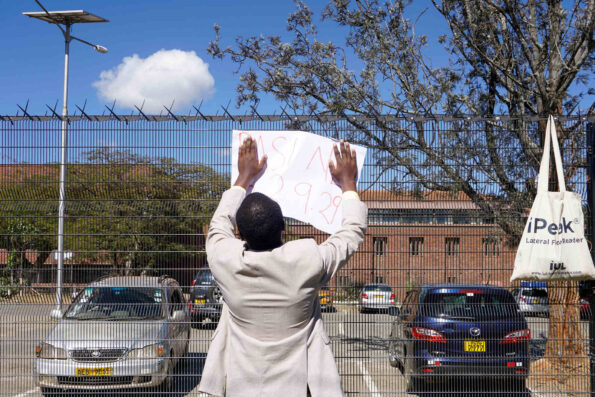
PATTAN, INDIAN-ADMINISTERED KASHMIR – Nazir Ahmad rushes to approach the owner of a horse-drawn cart, called a “tonga” here, and begs him to carry his ailing mother to the hospital.
“She suddenly caught fever and complains about pain in chest,” says Ahmad, a resident of Trikolbal, a village in Pattan.
Ambulances are unheard of here in Pattan, an administrative division in the northern part of Jammu and Kashmir state.
“We’ve to rush her to a hospital, and there is no transport facility available,” Ahmad says.
His wife, Jameela Begum, and his daughter, Sabreen Bano, support their ailing mother-in-law and grandmother to reach the tonga. With great difficulty, the elderly woman steps up into the cart, which has the capacity to carry six passengers.
Ahmad and his wife sit on either side of the ill elderly woman to make her feel at ease. But uneven roads marred with bumps and deep potholes make it a difficult journey for even a healthy passenger. Still, Ahmad says there’s no other transportation option.
“This is a routine affair here,” he says. “Whenever anyone falls ill or is in need of medical assistance or treatment, either we’ve to hire a horse cart or load carrier or order a sumo [four-wheeler] from Pattan town. Often they overcharge, but we’ve no other option.”
Horse carts are the main mode of transportation here in the northern villages of the state. As the horses gallop through deserted and deteriorated roads, they pull passengers in large wooden carts. After passing through vast paddy fields spread across Pattan’s several villages, passengers heave a sigh of relief upon reaching their destinations.
Villagers say that the lack of transportation options here hurts them socio-economically. Education is one main area that suffers because of poor transportation. Routinely overcrowded tongas and poor road conditions also present safety risks. Residents say that various factors have slightly improved transportation from the past, but that they are still living behind modern times. The government is building a bridge and has allotted two buses to the area, but villagers say the bridge project has been going on for years and bus service is limited.
Horse-drawn vehicles are called tongas here. The cart tied to the horse has two big, wooden wheels and a wooden roof over the seat. The tonga driver steers the horse with a “chabuk,” a thin stick with a nylon thread tied to it.
With no cars and limited other options for transportation, residents rely on tongas in several villages in Pattan, including Buren, Trikolbal, Moulabad and Mundyari. Residents say that the lack of transportation options has an adverse impact on various socio-economic aspects of life, including education, health and trade.
“Absence of transport facility makes life dull and difficult here,” says Khazeerah Begum, a middle-aged woman from Moulabad. “Even horse carts aren’t available all the time. We’ve to walk down all the distance, which is painstaking.”
As Begum continues to speak, Ali Mohammad, a local from Trikolbal, hires a tonga to transport the fodder for cattle and a few sheets of glass for construction that he just purchased from a market in Pattan town.
“Imagine the difficulties it would have incurred had there even been no horse cart,” he says while traveling on a tonga. “In contemporary world, where distance has lost its meaning, we continue to live in an area with no modern transport facility at all.”
Another group that suffers is students.
Bilal Ahmad Khanday, a teacher at a local primary school in Mundyari, says that, despite the time that has passed, the transportation situation hasn’t improved much from his own school days.
“I faced huge problems when I used to go to school,” he says. “I couldn’t take lunch and used to go [on an] empty stomach. I used to leave my home early morning and returned late evening. This continues even today vis-à-vis students who have to move out of village for studies. The same often leads to disinterest among students with respect to their studies.”
Two students, Uzma Bano and Tahira Akther, a common name here, say this is still the case. They say that, like many other students from the area, they have to walk several kilometers to and from school – several times a day.
“We leave early morning and then come for lunch during midday, go back after finishing lunch and return in late afternoon,” Akther says. “This way it becomes a hectic day for us, but we are all used to it.”
Mymoona Akther, Khanday’s neighbor, says that the absence of adequate transportation continues to affect the studies and performances of students.
“They fail to reach their respective educational institutions in time,” she says. “That affects their routine classwork.”
And she says it’s not just students who suffer.
“People in general too face difficulties,” she says.
Locals say another issue is safety.
Wali Mohammad, a tonga owner, says that they often overload the carts with nearly double the number of passengers that the cart is built to hold. Tongas have the capacity to seat six passengers, but because the area lacks other transportation options, they often carry 10 to 11 passengers.
“Everyone is in need, so we often go for overload,” he says. “There are limited numbers of horse carts plying on the road, and we try to cater to need and demand of the area.”
Each year, people suffer minor injuries from tonga accidents.
Hasina Akther, a resident of Mundyari, says that the transportation situation has improved since past decades because of the decline in militancy.
“Twenty years down the line, it was hard to shift a patient or a needy to hospital during dark hours as militancy here was at its peak,” she says. “Not even a horse cart was available that time. People generally utilized services of traditional birth attendant [dayee] for expecting mothers. But dayees couldn’t help much in complicated cases.”
Khanday says that the advent of mobile phones has also improved transportation in the area.
“Before availability of mobile phone services here, more deaths used to take place in village for want of timely medical assistance and treatment,” he says. “Now, we can immediately arrange for transport facility in cases of emergency.”
Still, he says transportation for the most part is dismal. He says service varies by village.
“Tonga service is comparatively better up to Trikolbal,” he says. “Ahead of that, it is worst. Movement of horse carts from Trikolbal to Moulabad and Mundyari is almost thin. We’ve to either hire entire tonga or have to cover the distance on foot. Though we are used to it, but the matter of fact is that it needs to be improved.”
He says that many people here work low-paying jobs and can’t even afford to hire a tonga. Instead, they must walk.
“Most of the population here is engaged in carpet-weaving or are laborers,” he says.
Mohammad says the government hasn’t been much help.
“Our ministers and members of legislative assembly are least bothered,” he says. “We’ve been left at the mercy of Almighty.”
Akther, Khanday’s neighbor, says that the government is constructing a bridge in the village, which would ease residents’ problems to a large extent. But she says the project has been going on for three years and still isn’t finished.
In addition to the bridge, the government has allotted two buses for the area. Khanday says that these buses carry people from their villages to the town center early in the morning and bring them home late in the evening. But he says that the buses aren’t available during the day, when they serve other areas.
“This is not of much use, and people continue to suffer,” he says.
Anees Khan, a regional transport officer in Kashmir, declined to comment on the issue.
“I have long public waiting over here,” he says. “Don’t keep me engaged. I can’t waste time over it.”
Villagers say they hope that motor vehicles will replace tongas soon to shorten the distances they must travel daily to fulfill their basic needs.







